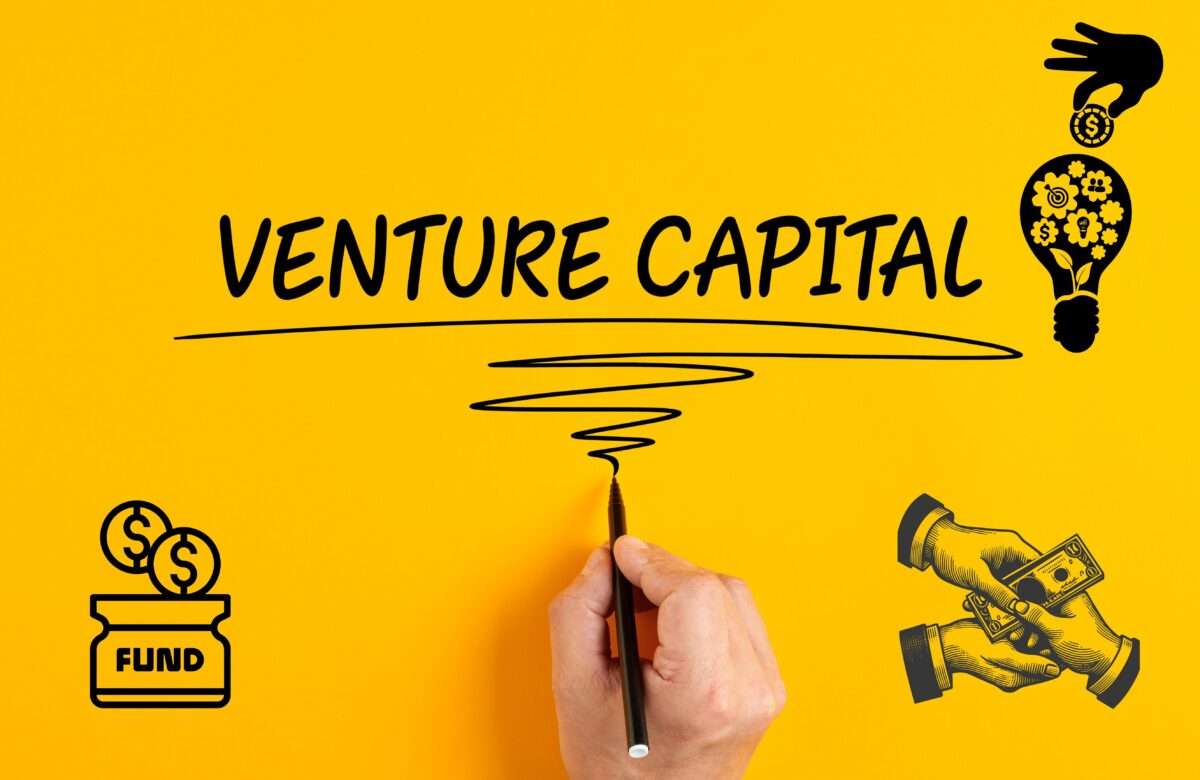- 25 February 2024
- No Comment
- 978
Crowdfunding: Understanding the Concept and Mechanism

Whether in Venture Capital (VC) or in Crowdfunding, Investors aren’t swayed by mere ideas; they want to witness action. Your dedication, confidence, and the tangible steps you’ve taken matter more than a dazzling concept. Before investors open their wallets, they crave evidence–prototypes, specifications, well-thought-out business plans, and grounded research.
Forget flashy videos and grand promises; serious investors seek substance. If you can’t kick-start your vision independently, showcasing your belief and expertise, no amount of funding will rescue the situation.
In the eyes of judgmental investors, it’s not about what you dream of doing; it’s about what you’ve already achieved before knocking on their door. The journey of turning vision into reality begins with your own strides.
And remember, not every failure is a scam; some are just bad ideas wrapped in enticing marketing. Well-executed ideas by capable individuals can also stumble.
Crowdfunding success isn’t guaranteed for even the most promising ventures. So, does this mean we should bid farewell to crowdfunding? Not exactly.
Crowdfunding’s original essence was supporting small projects, not funding million-dollar dreams.
Bloomberg estimates that crowdfunding is gearing up to hit a whopping $28.2 billion worldwide by 2028, leaping from $13.5 billion in 2021. The numbers speak volumes about the global community’s enthusiasm for supporting ideas and causes that matter.
NASA dubbed the Apollo 13 mission a “successful failure” for not landing on the moon but overcoming technical challenges. Similarly, tech crowdfunding ventures like Ouya, Ubuntu Edge, and Kreyos Meteor faced hurdles in the real world.
Ouya aimed to be an affordable Android gaming device and media center, but using the latest hardware backfired with soft demand. Ubuntu Edge, a hybrid device for Linux lovers, raised $12 million but fell short due to an overambitious $32 million goal and changing smartphone dynamics. Kreyos Meteor, promising advanced smartwatch features, rushed its timeline, leading to glitches and weak demand.
These examples show promising ideas can hit roadblocks, not due to scams but genuine challenges. Unlike industry giants weathering missteps, Microsoft’s flop won’t sink the ship, a crowdfunding hiccup can have a more significant impact.
Hi, I’m Nabeel Shaikh, a seasoned chartered accountant, management consultant, and entrepreneur. In this article, we will explain crowdfunding with a clear understanding.
What is Crowdfunding?
Crowdfunding, in simple terms, is like a digital community coming together to make things happen. It’s the process of gathering funds from a bunch of individuals using online platforms, where people can either donate or invest. These funds can be a game-changer for bringing business ideas or specific projects to life.
The journey of crowdfunding gained momentum around 2005 when Kiva, the pioneer in social causes, paved the way. Today, platforms (crowdfunding sites) like Kickstarter, Indiegogo, and Wefunder joined the party, making crowdfunding accessible to anyone with internet access in countries where these platforms operate.
Now, why do people jump on the crowdfunding train? Well, it’s a versatile ride!
Crowdfunding: What Can Be Fund
Here’s a glimpse of what crowdfunding can be used for:
Startup Investments: Individuals interested in investing in startups can participate in crowdfunding by purchasing shares. The potential return on investment arises when the startup is sold or goes public, but there’s also the risk of loss if the venture falters.
Small Business Growth: Small businesses seeking expansion can raise funds through crowdfunding. In return, backers may receive goods or services, fostering a symbiotic relationship between the business and its supporters.
Medical Emergencies: Individuals facing unexpected medical crises can turn to crowdfunding for financial support. It becomes a community effort to alleviate the burden of medical expenses.
Nonprofit Missions: Nonprofits leverage crowdfunding to sustain and advance their missions. The funds collected contribute directly to the causes they champion, creating a collective impact.
Types of Crowdfunding
- Equity-based crowdfunding
- Debt-based crowdfunding
- Donation-based crowdfunding
- Rewards-based crowdfunding
Equity-Based Crowdfunding:
What is it: Backers become more than supporters; they become investors. It’s like owning a piece of the business you support.
Popular Platform: Meet Wefunder, a go-to spot for equity crowdfunding.
Why it’s Used: Founders turn to equity crowdfunding to kick off or grow their business.
Legal Stuff: Started in 2012 under the JOBS Act (U.S), making online securities issuance legit. Platforms follow SEC rules (that’s the Securities and Exchange Commission) to keep things in check.
Rules for Entrepreneurs: There’s a $5 million cap for fundraising in a 12-month stretch. No unlimited jackpot here!
Who Likes it: Both tech startups and traditional businesses find a home in equity-based crowdfunding.
Website for Crowdfunding: https://wefunder.com/
Debt-Based Crowdfunding:
What is it: Think of it as the crowd becoming your friendly lenders. They lend money for your business, and you promise to pay them back, usually with a little extra (interest).
Why Choose It: Quick and less hassle than dealing with banks. Perfect if your credit score isn’t singing a perfect tune.
Example Platform: Meet Kiva, a familiar face in the world of debt-based crowdfunding. And the bonus? No interest charges!
How it Helps: Need funds for specific projects? The crowd’s got your back, lending you a hand without the banking drama.
Donation-Based Crowdfunding:
What is it: Good-hearted folks donate money to a cause. It’s like a digital hat-passing for unexpected personal or professional challenges.
Common Users: Business owners and individuals hit by unforeseen struggles find solace in donation-based crowdfunding.
Rewards? Nope: Unlike other types, there are no rewards, benefits, or ownership for donors. It’s pure generosity.
Meet GoFundMe: A well-known spot for this type of crowdfunding. No strings attached, just people helping people.
Where the Money Goes: It could be for hefty medical bills, recovering after a disaster – basically, for things insurance might not cover.
Rewards-Based Crowdfunding:
What is it: Backers get goodies in return for their support. Think of it like a gift exchange – you contribute, and the startup founder gives you cool stuff.
Popular Platforms: Kickstarter and Indiegogo rule this space.
How it Works: The more you pledge, the fancier the gift. It could be anything from exclusive merchandise to VIP event invites or early access to products.
Costs and Options: Platforms usually take a cut, around 5-8%. Kickstarter gives back if the goal isn’t met; no money for the business. Indiegogo lets the business keep what’s raised, goal met or not.
Specialties: Different platforms have their strengths – Kickstarter for gaming, Indiegogo for tech gadgets. Products for everyday consumers (not just businesses) shine here.
Crowdfunding: How it Works
How does it actually work? Let’s break it down:
Registration and Profile Creation: Your crowdfunding journey begins with registering on a crowdfunding platform and crafting your profile. This step sets the stage for your campaign.
Campaign Creation: With your profile in place, it’s time to create your campaign or fundraising page. Here, you narrate your story – why you need funds and what you’re aiming to achieve. Set a fundraising goal that aligns with your needs.
Launching Your Campaign: Once your campaign is crafted, it’s time to launch. Depending on the platform, you might have a 30-day (or longer) window to collect funds. The clock starts ticking.
Fund Collection: Here’s where the magic happens. People who resonate with your cause start contributing. Some platforms allow you to access funds within days, providing a swift boost to your financial goals.
Direct Deposit to Your Account: Funds collected don’t linger in cyberspace. They are directly deposited into the financial institution account linked to your fundraising account. It’s a seamless process, ensuring your funds reach you promptly.
Advantages and Disadvantages of Crowdfunding
Advantages of Crowdfunding
Credit Score Not Needed: Crowdfunding doesn’t care if your credit score is low or nonexistent, making it a viable option for those facing traditional loan barriers.
Proof of Concept: The speed and generosity of donor contributions in crowdfunding show if your idea has wings, serving as proof that people believe in it.
Organic Customer Base: Backers often become loyal customers, building relationships from the start without splurging on paid ads or marketing.
Free Marketing: A successful campaign can be a free marketing tool, generating online buzz, social media shares, and potential investor interest.
Multiple Funding Sources: Successful campaigns attract hundreds of investors, creating a safety net in case one backs out and potential angels for future scaling.
Avoids Bank Interest: Skip hefty bank loan interest costs; crowdfunding might have fees, but they often beat the expense of repaying traditional loans.
Fast Capital: Crowdfunding is a quick money-raising method compared to bank loans or pitching to investors, giving you control over the campaign’s duration.
Disadvantages of Crowdfunding
Missing Funding Target: Compelling campaigns may fall short. Kickstarter refunds if the goal isn’t met; Indiegogo lets you decide. Check platform policies before diving in.
Time Commitment: Crowdfunding demands time – from planning visuals and rewards to creating videos and engaging on social media. Prepare for the hustle.
Equity Sacrifice: Choosing equity crowdfunding means giving up a stake in your business. Decide on the percentage and dividends, but beware – if the business falters, investors might lose out.
Regulatory Paperwork: Equity crowdfunding involves SEC rules, forms, and filings. Hiring a lawyer can smooth the paperwork process for compliance.
Minimal Guidance: Crowdfunding lacks the professional guidance of venture capital firms. Seek mentors, join groups, and network to build your own support system.
Low Success Rate: Crowdfunding success isn’t guaranteed; Kickstarter’s success rate is around 40%. Understand the odds before launching.
False Positives: A successful campaign doesn’t guarantee business success. Similarly, a failed campaign might just be due to poor planning, not a bad idea. Evaluate beyond the crowdfunding outcome.
Crowdfunding is just one path among many. Most people don’t rely solely on one funding source. It’s essential to weigh the pros and cons of each method and select the one that aligns best with your business model, financial requirements, and future aspirations. So, explore your options wisely and pave the way for your success!




